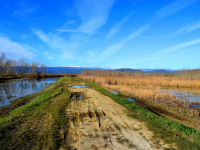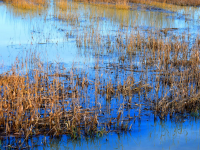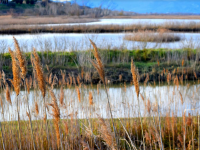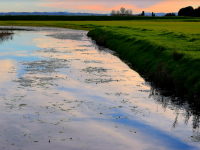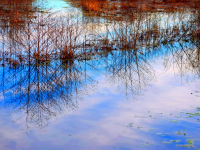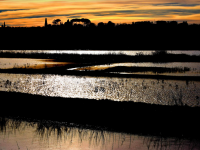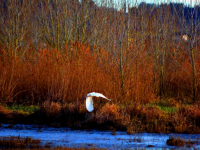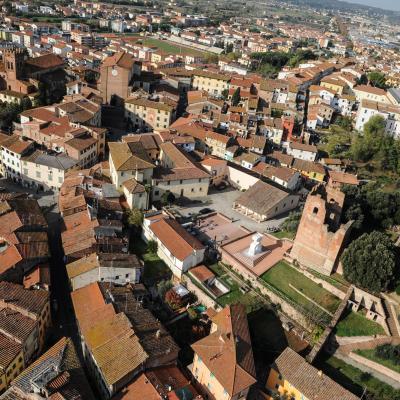Atmospheres, reflections, wonderful landscapes, but not only: this place also gives emotions for its peculiar plants and for the amazing wildlife that inhabits it. Located on the edge between the peninsular region of Mediterranean and continental climates, the Padule simultaneously houses plants adapted to different climates; in the Paduletta of Ramone, on the edge of the Forest of Chiusi, survive for example the Frogbit (Hydrocharis morsus-ranae) and the Royal Fern (Osmunda regalis), plants of humid warm climate, and particular mosses, called sphagnum sp., more typical of climates cold north and descended here during the last glaciations.
Only in the Paduletta, and in a few other areas of the marsh crater, there are still discrete extensions of the Tufted Sedge (Carex elata), locally called "sarello"; this plant of Nordic origin develops in "gerbi" (creeping formations) formed by multiple individuals, which take on the characteristic appearance of islets surrounded by water. Today, unfortunately, large sedges are often supplanted by more resistant species such as the Common reed (Phragmites australis).
Where huge reed beds give way to open water, we find the "lamineti", formed by plants with floating leaves (such as the large yellow water lilies) that offer one of the last refuges to numerous highly specialized species: the blister grass (Utricularia australis), a floating carnivorous plant; Yellow floating-heart (Nymphoides peltate), with beautiful yellow flowers; the strange Water butterfly wings or floating fern (Salvinia natans), a small fern boat now very rare in Tuscany; and the water violet or featherfoil, (Hottonia palustris), discovered in the wetland only recently.
In regards to wildlife, the Marsh plays a key role in the migratory routes between the Tyrrhenian coast and the interior; Over 200 species of birds can be observed here during the year. The marshland area therefore offers exceptional ideas for fans of birdwatching and naturalistic photography, especially during the spring pass.
The herons, which have created a large oasis, that is, a real "city of herons" with thousands of birds, take on a particular natural relief. It is the most important nesting colony in south-central Italy, both for the number of breeding pairs (about 1000) and for the contemporary presence of seven species: the Nitticora, the Egret, the squacco heron, the Western cattle egret, The Ash Air, the Major White Heron and the Red Heron.
Among the mammals, in addition to the intrusive Nutria (Myocastor coypus), it should be remembered for its naturalistic and biogeographical interest the harvest mouse (Micromys minutus), the smallest European rodent. Equally rich is the micro wildlife, among which there are more than 1000 species of beetles: the Marsh, in this case, functions as a refuge area for many species of swamp related to cold climates.
Source: Padule of Fucecchio Research, Documentation and Promotion Centre


